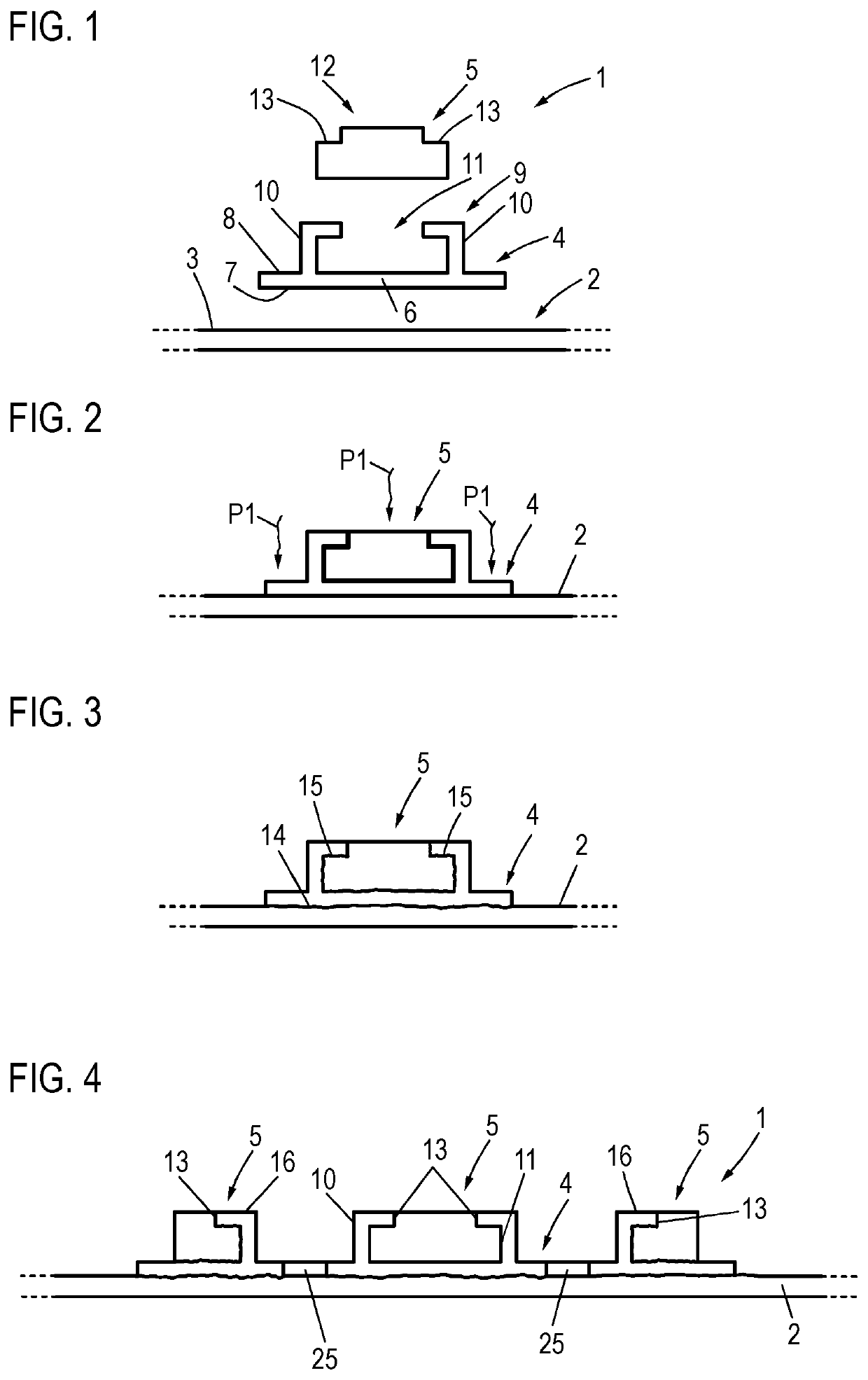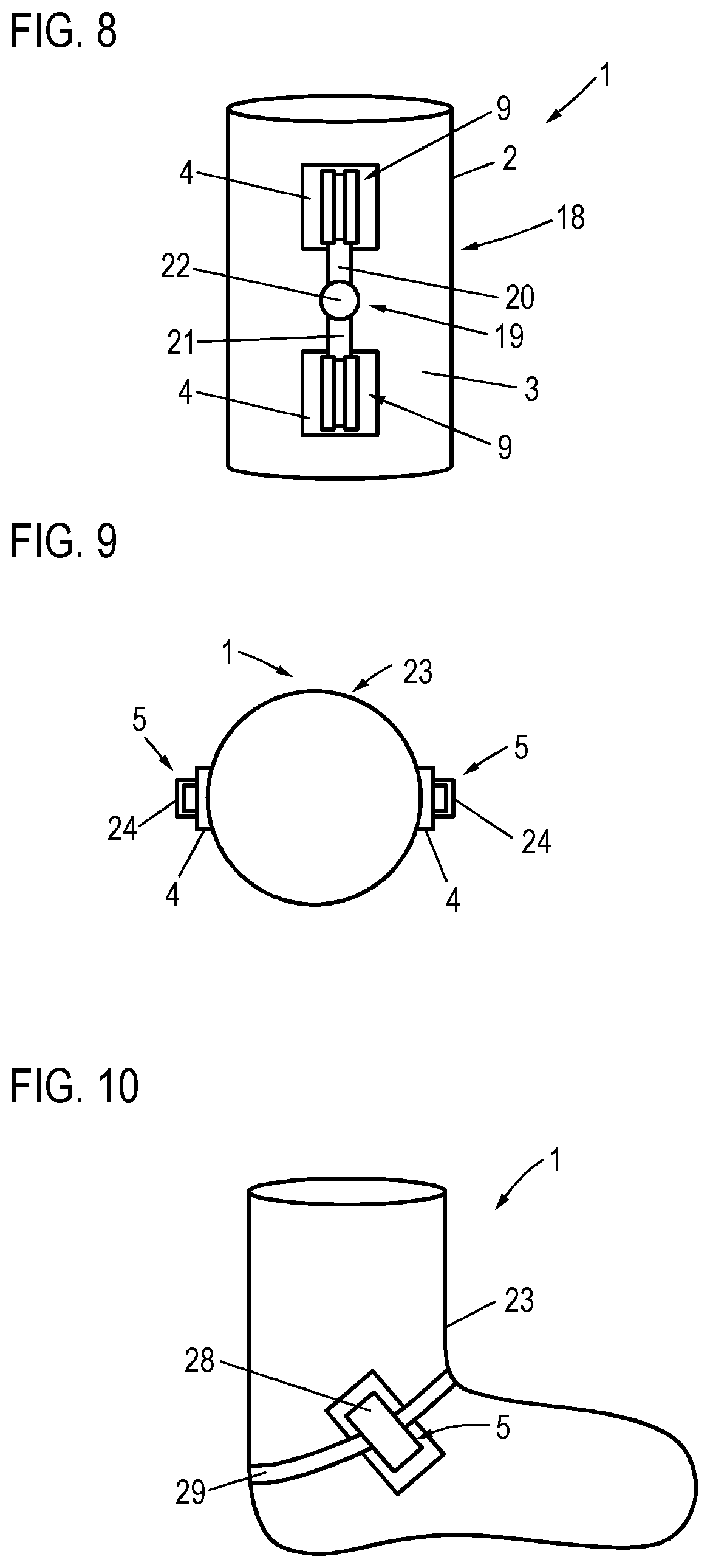Textile part
- Summary
- Abstract
- Description
- Claims
- Application Information
AI Technical Summary
Benefits of technology
Problems solved by technology
Method used
Image
Examples
Embodiment Construction
[0043]FIG. 1 in the form of an exploded view shows a textile part 1 according to the invention, comprising a main panel 2, preferably a textile knitted panel, in particular having compressive properties. The main panel 2 has an external side 3 onto which a fastening element 4 as well as a functional element 5, which is fixed to the fastening element 4, are subsequently placed. Alternatively to the disposal on the external side 3, there is of course also the possibility of placing the functional element 5 and the fastening element 4 on the opposite internal side of the main panel 2.
[0044]The fastening element 2 presently is a plastics-material element, for example, in the manner of an elongate, comparatively flexible or rather comparatively stiff plastics-material film, for example, which has a corresponding element base 6 having a lower side 7, wherein a form-fit contour 9 is configured on the opposite upper side 8 in the example shown, said form-fit contour 9 comprising two legs 10...
PUM
| Property | Measurement | Unit |
|---|---|---|
| Fraction | aaaaa | aaaaa |
| Flexibility | aaaaa | aaaaa |
| Energy | aaaaa | aaaaa |
Abstract
Description
Claims
Application Information
 Login to View More
Login to View More - R&D
- Intellectual Property
- Life Sciences
- Materials
- Tech Scout
- Unparalleled Data Quality
- Higher Quality Content
- 60% Fewer Hallucinations
Browse by: Latest US Patents, China's latest patents, Technical Efficacy Thesaurus, Application Domain, Technology Topic, Popular Technical Reports.
© 2025 PatSnap. All rights reserved.Legal|Privacy policy|Modern Slavery Act Transparency Statement|Sitemap|About US| Contact US: help@patsnap.com



